

ENTER
THE WORLD OF
JESUS
The world of Joseph, Mary and Jesus, and the events of the Nativity
■ By Warren H CarrollThe World of the Nativity

The year was 747 of the Roman era - ab urbe condita - reckoned from the legendary founding of the imperial city by Romulus and Remus the wolfchildren - according to our calendar (distorted at this point by a relatively minor historical error on the part of its original designer, the monk Dionysius the Little), 7 BC. Half-demented King Herod, grown monstrous with bitter age (67) and raging hate, had just executed his two sons by Mariamne, his one-time great love whom he had also murdered many years before; Caesar Augustus commented that it was better to be Herod’s pig than his son. The boys had died by the strangler’s noose, along with 300 officials at Jericho suspected of collusion with them. The king had dyed his white hair black, the better to pretend that he was young again. The world and the Chosen People looked upon this spectacle of evil with the mixture of fear and unhealthy fascination such spectacles always evoke. Yet in the Promised Land, blessed long ago by God Himself when He led His Chosen People there and gave it to them, were two temples for Him: one the mighty structure of stone on the site where (except for the 50 years of the exile in Babylonia and the three years of Antiochus IV’s profanation at
“Thus Mary and Joseph came to Bethlehem, and in a cave-stable with none but those two at first to adore Him, the Maker of the Cosmos invaded the world He had crafted and was constantly sustaining in being, coming secretly, underground, speechless and helpless in His infant humanity, yet still and always the Lord of the galaxies and the light-years, the Saviour Who was to conquer death and open the gates of Heaven.”
His world
the time of the Maccabees) He had been honoured with sacrifice and incense and prayer and vows for just short of a thousand years; the other of flesh and blood, a girl about 14 years old, “a virgin betrothed to a man whose name was Joseph, of the house of David, and the virgin’s name was Mary.”
Mary and Joseph lived in Nazareth, a little village tucked away in the Galilean hills in the northern part of Palestine. There is good reason to believe that before her betrothal Mary had pledged her virginity to God, so that her marriage to Joseph was only to give her a protector and legal status in a society whichexcept for the Essene communities at Qumran and elsewhere - had no place for the consecrated celibate life. In the temple at Jerusalem the sacrifice of lambs and the burning of incense went on, morning and afternoon, every day of every year.
Some 20,000 priests, descendants of Aaron and Levi, were eligible to offer the incense on the golden altar of the sanctuary, alone before the curtain which screened the Holy of Holies. Each one, chosen by lot, did so just once in all his life.
It was probably in this year 747 a.u.c. /7 B.C. that the priest Zachary was chosen for this highest honour that life could bring to an ordinary Israelite of the priestly tribe. Zachary and his wife Elizabeth had lived holy lives, striving always
to please God and to keep His commandments; but they were old, and Elizabeth had borne no children. As Zachary offered the incense, wholly alone before God, he prayed - probably then, as certainly earlier, for a son; and certainly, as pious Jewish men prayed regularly and especially on this most holy occasion of offering their once-in-a-lifetime priestly sacrifice to God, for the long-awaited coming of the Messiah. Prayer has a power of which even two millennia of Christianity have not always made us sufficiently aware.
The Angel Gabriel, “who stands in the presence of God,” came to Zachary in the sanctuary, to tell him first of all that he came in answer to his prayer. Zachary would have a son, who should be called John, whose mission would be “to make ready for the Lord a people prepared.” John the Baptist was to be the last and the greatest of the prophets of the old covenant, and the herald and immediate precursor of the new. Zachary emerged from the sanctuary dumb; he told only his wife, by writing, about the revelation he had received, and they went into seclusion for six months.
Since she was not yet living with Joseph, Mary must still have been at the home of her parents, according to tradition named Joachim and Anne. Presumably, like most dwellers in Nazareth then and
for long afterward, they lived in a natural cave in the soft rock built up at the entrance so as to serve as a humble home. Luke’s language clearly indicates that the Angel Gabriel actually entered the dwelling and spoke with Mary alone inside, using the words whose millions upon millions of repetitions have been counted in Heaven through all the centuries the Rosary has been prayed: “Hail Mary, full of grace, the Lord is with you.” Then the angel told her that she had been chosen to be the Mother of the Eternal God, Whose kingdom has no end - if she agreed. She asked how this could be, in view of her vow of virginity, and the answer came in those glowing, perfect words: “The Holy Spirit will come upon you, and the power of the Most High will overshadow you.” Her Divine Son was to have no human father, only His Father in Heaven.
Gabriel went on to tell Mary of the miraculous conception of John the Baptist in the previously barren womb of Elizabeth, who was related to Mary, reminding her that “with God nothing will be impossible.” Then came Mary’s humble acceptance - on which, as a free act of her own will, depended the fate of billions of souls, the whole destiny of the human race. There in the room of the cave-house in little, forgotten Nazareth, alone except for the angel, utterly unknown to

Caesar Augustus: the Emperor commented that it was better to be Herod's pig than his son.
the mighty of the world then hanging in the balance, she paused, while the King of the Universe waited upon her answer.
“Behold, I am the handmaid of the Lord, let it be done to me according to your word.”
In that moment, according to most orthodox theologians, the Incarnation was accomplished. For the next nine months Mary Immaculate carried God in her womb.
As soon as she could arrange it, Mary left Nazareth to visit Elizabeth, her relative whose special blessing of a son the Angel Gabriel had reported to her. It is most unlikely
The Nativity is depicted in a mural titled “Birth of Jesus” in the Basilica of the Immaculate Conception at Conception Abbey in Conception, Missouri. It was painted by Benedictine monks in the late 1800s. Photo: CNS WARREN H. CARROLL brings history alive by taking a detailed look at the events leading up to the birth of the Baby Jesus.The World of the Nativity
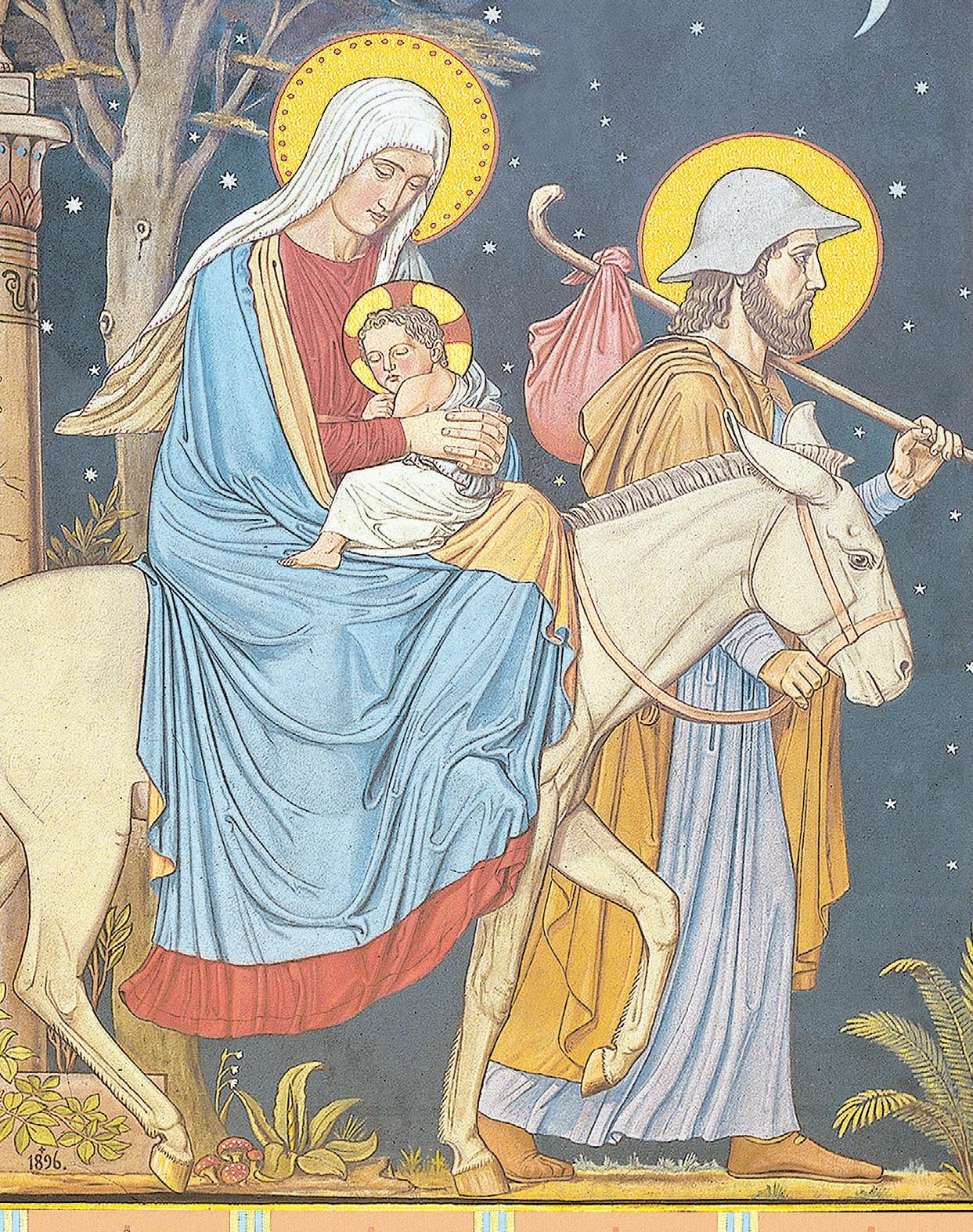
that Joseph accompanied her. She may have travelled alone or with a caravan, riding a donkey or on foot - but probably in company for safety and on foot because of her poverty. The journey to Ain Karem near Jerusalem, the probable site of Zachary’s and Elizabeth’s home, would have taken at least four days; the roads were often steep and rocky. Even if with a caravan, Mary was in a human sense utterly alone during that journey, for no one in all the world knew or could possibly have begun to imagine her secret, that she carried in her body the salvation of mankind. Her attention must have been focussed constantly on the glory within her. Mary’s lonely journey from Nazareth to Ain Karem on the occasion of the Visitation would seem to merit more attention than it has generally received in theological and devotional works.
When she arrived at Elizabeth’s home and Elizabeth came to greet her, Mary at last found another whom God had enlightened about her Son. Elizabeth welcomed her as “the mother of my Lord” and John the Baptist in Elizabeth’s womb “leaped for joy” as, according to orthodox Catholic theology, he was baptised and sanctified by Christ from Mary’s womb. Mary responded with her sublime Magnificat:
“My soul magnifies the Lord, and my spirit rejoices in God my
Saviour, for he has regarded the low estate of his handmaiden. For behold, henceforth all generations will call me blessed; for he who is mighty has done great things for me, and holy is his name. And his mercy is on those who fear him from generation to generation.”
It seems overwhelmingly probable that Mary remained with Elizabeth until John was born, only then returning to Nazareth. It had now been nearly four months since the Incarnation, and Mary’s pregnancy had become visible; yet still, not having been directed to reveal it, she kept her cosmic secret even from Joseph. Knowing her to be spotlessly pure, and knowing at the same time that the child she was carrying could not possibly be his because of the total continence of their relationship, he struggled to decide what he should do. Public denunciation and repudiation of Mary - the usual action of a Jewish man under such circumstances - was unthinkable; but to proceed with the marriage without knowing the truth about this child seemed wrong for a just man, a descendant of David who lived by the Law and honoured all the traditions of his people. So Joseph, debating with himself, inclined toward a private separation. When the child was born it would be assumed to be his, for Jewish betrothal customs of that time apparently often involved
- indicates a firm decision on his part not to defame Mary in any way, and only a tentative leaning toward the separation. In his doubt and great distress he would have prayed much for God’s help and enlightenment, and Mary would have been praying constantly for him; and so another angelic message came, to reassure Joseph that it was right for him to take Mary as his wife, and informing him of the virginal conception and salvific mission of Jesus.
Thus Joseph became, to all outward appearance at the time, the father of Jesus; and through his adoptive or foster fatherhood he transmitted to Jesus juridically the lineage of David, which was sufficient in Jewish law and custom to establish the descent of Jesus from David which the prophets had foretold of the Messiah.
While Joseph and Mary dwelt together in Nazareth and the time neared for the birth of their Divine Son, a command in the name of the far-distant ruler of their world, Caesar Augustus of the Roman peace, crashed into their quiet, hidden life. Augustus’ orderly mind, which made him so great an administrator, sought accurate, detailed records of the available human and material resources of the Roman empire. Consequently he ordered a series of censuses. In 28 BC there had been a census of Roman citizens throughout the empire, and of all the inhabitants of Gaul. In 8 BC there had been another general census of Roman citizens. Now there was to be a census in Palestine, conducted in the Jewish manner, with every man registering in his ancestral home, but with the returns to go to the Roman authorities in Syria who had ultimate responsibility for affairs in Palestine, even though juridically Palestine was a separate client kingdom under Herod. That this census was probably ordered for a larger area than Palestine is strongly indicated by the evidence of a Roman census in Egypt at this very time, 6-5 BC.
intercourse between betrothal and marriage, which was not regarded as a serious sin. Whatever public blame there might be would fall upon him rather than upon her, since people would assume that had Mary been guilty of infidelity Joseph would have denounced her.
But the choice was extraordinarily difficult. Joseph’s own profound love for Mary must have impelled him, despite the tyranny of custom, to the course that naturally suggests itself to us: stand by her, marry her regardless of the unexplained pregnancy, and wait for God to reveal the truth. The language of the terse Greek text of St Matthew’s Gospel which is our only source for Joseph’s ordeal on this occasion - in the original, though not in most translations
Whether Herod played any part in the taking of this census in Palestine we do not know, but traditionally the Jews had always resented and resisted any enumeration of their people, even by a government of their own (King David himself had once ordered a census, then repented it and confessed it to God as a sin, choosing a pestilence upon the land as a punishment.) Resentment and resistance to a census ordered by a Gentile ruler could be expected to be still greater. The later Roman census of 6 AD, under Coponius as procurator of Judea, was the immediate cause of a major revolt by Judas the Galilean, supported by many of the Pharisees, which originated the long-lasting revolutionary movement of the Zealot party, active in Palestine until their
short-lived triumph in the great revolt of the Jewish War. Though we have no explicit evidence of a connection, there is a strong possibility that Herod’s known demand early in the year 6 BC that all his people swear a special oath of loyalty to Caesar Augustus, followed by his harsh punishment of leading Pharisees for inducing 6,000 people to refuse this oath, grew out of popular opposition to a Roman census in progress or imminent at that time. In any case, the imposition of this oath by Herod clearly shows the lack of real significance in the juridical distinction between client kingdom and province, sometimes used as an argument against the historicity of the report in Luke’s Gospel of the census being taken in Palestine at the time of Christ’s birth.
The requirement of registration at each man’s ancestral home meant that Joseph would have to travel almost a hundred miles to Bethlehem, whence the family of David had so spectacularly sprung a thousand years before. He could not leave Mary behind, for her Son’s birth was imminent; not only would Joseph’s love for Mary never have permitted separation at such a time, but for the foster father of the Incarnate Lord to be absent on His day of birth was unthinkable. So Mary made the journey with him, over mostly the same roads she had travelled on her visit to Elizabeth in the spring.
“My
soul magnifies the Lord, and my spirit rejoices in God my Saviour, for he has regarded the low estate of his handmaiden. For behold, henceforth all generations will call me blessed; for he who is mighty has done great things for me, and holy is his name. And his mercy is on those who fear him from generation to generation.”
Thus Mary and Joseph came to Bethlehem, and in a cave-stable with none but those two at first to adore Him, the Maker of the Cosmos invaded the world He had crafted and was constantly sustaining in being, coming secretly, underground, speechless and helpless in His infant humanity, yet still and always the Lord of the galaxies and the light-years, the Saviour Who was to conquer death and open the gates of Heaven. The Continued overleaf
 Mary, Joseph and the infant Jesus are depicted in a mural titled “Flight Into Egypt."
Photo: CNS
This bas-relief of the Magi that appears beneath St Peter’s Basilica is believed to be one of the oldest representations of the Epiphany. It shows Persian boys bringing their gifts to the infant Christ. The gifts, according to art historians, appear to be wine, fish and bread. Photo: CNS
Mary, Joseph and the infant Jesus are depicted in a mural titled “Flight Into Egypt."
Photo: CNS
This bas-relief of the Magi that appears beneath St Peter’s Basilica is believed to be one of the oldest representations of the Epiphany. It shows Persian boys bringing their gifts to the infant Christ. The gifts, according to art historians, appear to be wine, fish and bread. Photo: CNS
angels sang of His coming above the pastures around Bethlehem, and shepherds heard them - men despised as unclean by doctors of the Law, scribes and Pharisees, yet true Israelites who yearned for the Messiah and, now that He had come, were humble enough to accept Him on His own terms rather than demanding that He conform to their preconceived ideas about Him. After Mary and Joseph, the shepherds of Bethlehem were the first of all men privileged to know and to worship their Lord and Redeemer in the flesh. They enter history on Christmas night; they drop out of history the next morning. But they left a mark - and not only in Nativity sets.
It was of the fundamental nature of the Incarnation that it could happen only once. There could be only one Divine-human life, as there was only one God the Son; once only could God be a baby. And so it is natural and proper that the place where the Divine infant lay, the home of the shepherds who were the first after Mary and Joseph to adore Him, should be uniquely blessed. From the time of Christ to the present day, despite Muslim and many other conquests, Bethlethem has remained a predominantly Christian town.
Some hint of this deathless loyalty in Bethlehem may have come to Mary and Joseph, for it appears that they now decided to remain in Bethlehem rather than return to Nazareth. Jerusalem and the Temple were only seven miles away. Forty days after Jesus’ birth they went to present Him in the Temple as the Law of Moses prescribed, and to make the offering for a first-born son which the Law commanded. In the Temple the infant God was recognized and adored by two old and holy people who had waited in prayer for many years for the opportunity to see the Messiah in the flesh: Simeon and Anna. Simeon may have been the man of that name honoured by the Jews as one of the holiest and most learned teachers in all their history, the son of the great Rabbi Hillel and the father of the Rabbi Gamaliel, who was later to defend the Christians before the Sanhedrin.
Returning to Bethlehem with the Child, Mary and Joseph were about to have a new visitation, of a kind they could hardly have imagined, since all those so far who had recognised Jesus had been deeply
believing Israelites. But Jesus had come to bring salvation to the Gentiles as well, and they too were to send representatives to welcome and worship Him in Bethlehem. By now it was probably 5 BC. The seven miles separating Bethlehem from Jerusalem were like a bridge from Heaven to Hell. In a poor little house in Bethlehem Joseph worked at his carpenter’s bench; Mary’s radiant face bent over the Christ-Child, to bring forth His first smile; angels hovered. In his splendid palace at Jerusalem Herod felt the hatred of his people like a licking flame; with impotent fury he knew how they would rejoice when he was dead. A cancer was seeding in his bowels. He had more sons to kill: Antipater, his eldest, was next. Herod would slay him just five days before his own hideous death. Pretenders and false Messiahs were awaiting their opportunity. Herod knew that his patron Augustus despised him now, for the emperor was in most respects a decent and honourable man; he preferred not to deal with monsters. The world held nothing more for Herod. Abysses yawned beneath his stumbling feet. His spies brought word that sages from the east were in Jerusalem inquiring about a king of the Jews, most certainly not him. They seemed to be talking about a newborn baby. Herod questioned them himself. They spoke of an extraordinary astronomical sign, and of a king so holy He was to be worshipped, whose reign meant splendid new hope for the whole world. Apparently their Divine King was the Israelite Messiah. How had they known of Him? If they came from Iran, as the references to them as “magi” clearly suggest (Magi were found only in Iran), they were in the Zoroastrian tradition, who had ancient links with the revelation to Israel; there is an echo of the Messianic hope in the Zoroastrian Avesta. By study of the Hebrew Scriptures they could have come to understand these links themselves, thereby being prepared to hear and answer the call of the sign in the sky. Or they might have come from Arabia, where also many Jews had penetrated from the days of the Babylonian exile and the desert colonies established there by the last Babylonian king, Nabonidus. By the first century BC the time of Jewish exclusiveness had ended; wherever Jews went, their neigh-


bours learned a great deal about their faith and their hope.
On the advice of the Sanhedrin, the Jewish high priestly court, Herod told the sages from the east to go to Bethlehem, where the prophet Micah had said that the Messiah would be born, and to let him know if they found their newborn king there. They went to Bethlehem, found the Holy Family, and presented their offerings of gold, incense and myrrh to the Christ-Child; but immediately on their departure an angel warned them not to return to Herod, while St Joseph was told to flee to Egypt because Herod would try to kill the Child.
So the Holy Family crossed the grim desert running down from Mount Sinai, reversing the route of the Exodus, until they arrived in the Nile delta region. Falling into one of his fearsome rages, Herod ordered every male child two years old or under in Bethlehem to be slaughtered. There were probably only about 25 of these children, for Bethlehem was then a very small town; but the grief of a mother for her baby slain cannot be measured by numbers. The Holy Innocents died. The Church of Christ has honoured them through almost all her history as the first martyrs who, like soldiers in a rear-guard though all unknowing, gave their lives that the King might escape and live. There were many Jews
in Egypt; Mary and Joseph could feel as much at home there as anywhere outside the Promised Land, while they waited for a better day.
In April of 4 BC Herod died at last, leaving orders that hundreds of prominent citizens whom he had imprisoned be killed so that mourning would accompany his funeral, since he knew there would be no mourning for him. Even his vicious sister Salome, who for many years had come close to matching Herod in evil, would not carry out these orders. Herod’s eldest surviving son Archelaus succeeded him; Augustus hesitat-

ed some time before confirming his succession, and then allowed him only the title “ethnarch,” not king, and only for Judea (the area around Jerusalem), not for Galilee. Augustus knew that Archelaus was essentially the same sort of man as his father, but less competent. Joseph knew this too. He abandoned his plan of settling permanently in Bethlehem, which was in the region now to be ruled by Archelaus, and returned to Nazareth in Galilee where a less evil son of Herod - Herod Antipas - now reigned as client king. Here the boy Jesus grew up.
The above is an edited excerpt from Chapter 14 'The Incarnation of the Lord' in The Founding of Christendom by Warren H. Carroll. Dr Carroll holds a Ph.D. in history from Columbia University and taught History at both Indiana University and Christendom College in the US, which he also founded in 1977. So far, he has written four volumes of a projected six-volume history of the world which presents history premised upon the centrality of the Incarnation.
The Epiphany is depicted in a mural titled “Adoration of the Magi” in the Basilica of the Immaculate Conception at Conception Abbey in Conception, Missouri in the US. Photo: CNS A sixteenth century version of the shepherds visiting Jesus in the stable, painted by Pieter Janszoon Pourbus.


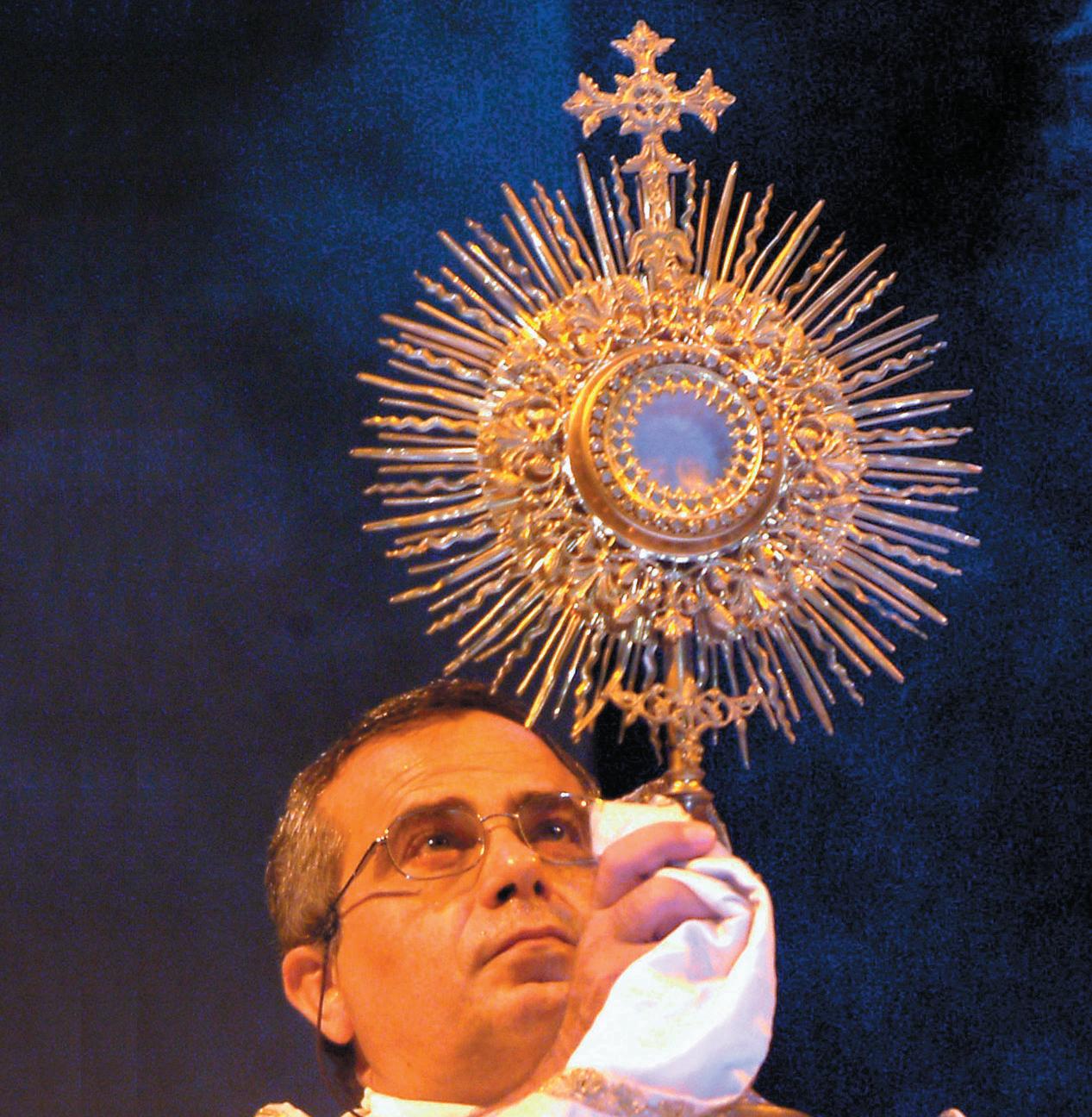


MANNING & ASSOCIATES OPTOMETRISTS
Contact Lens Consultants
Mark Kalnenas (B. optom)
Grove Plaza, Cottesloe 9384 6720

St. Rita’s Catholic Books
Ph: (08) 9446 5069
stritabooks@webace.com.au
ne sell orthodox Catholic books for all ages: colouring books lives of the saints catechisms devotional and much more. Contact Paul or Janice for a catalogue or more information. Mail orders welcome.

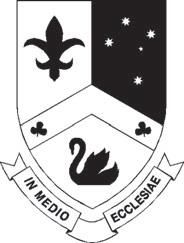
Year of the Eucharist Holy Hour
Exposition, Vespers & Benediction
Sunday evenings 6:30pm – 7:30pm
St Joseph’s Priory Church Treasure Road Queens Park Holy Hour Norbertine Canons
A LIFE OF PRAYER
to the Benedictine life of divine praise and eucharistic prayer for the Church? Contact the:
TYBURN NUNS
Rev Mother Cyril, OSB, Tyburn Priory, 325 Garfield Road, Riverstone, NSW 2765 www.tyburnconvent.org.uk
VISITING SYDNEY
You’re here. Why not stay?
As we enter into the turgid round of Christmas television the problem of a ‘modern’ concept of Christmas becomes painfully obvious.
I get the impression that now, more than ever, people are looking for meaning over Christmas time. People seem to want to recreate some sort of “Christmas Spirit” but what does it all mean?
Did we find it as we sat through the mawkish sentiment and often inappropriate humour of “The Grinch” with our children the other day? It acknowledged that “Christmas wasn’t about presents” - Yes! “That Christmas wasn’t about shopping or decorations” - Yes!
That Christmas had something to do with families and hearts and saccharine sweet Cindy Lou singing a sappy song with a still-sarcastic Grinch - No! We then flipped to “Carols in the Domain”.
Did we find Christmas Spirit there? Andrew Daddo’s enthusiastic commentary worked us into a fever of expectation as all of Australia’s brightest stars came together to sing all of our beloved Yuletide songs. As I listened to the words to “Away in a Manger” I wondered how many of the performers had any idea at all about what they were singing or if it meant anything to them personally. For the next week we will turn the TV on and have the same
Catherine Parish @ home


unsatisfying fare served to us in different guises, desperately trying to engender “Christmas Spirit” without mentioning Christ. Did we find Christmas
LIFE-CHANGING BOOKS!
These books by Joyce Meyer apply principles from God’s Word to help you overcome trials and live in victory! Easy to order online or by mail: www.faithbookstore.com.au

dHugh Gillespie and his staff would like to wish all his patients, friends and neighbours a healthy, peaceful Christmas Season.
224 Grand Promenade, Bedford, 6052 Ph: 9276 4921 Ah: 0407 762 241 We treat people first!
our co-ordinated bauble racks? Hmmm. What I suppose concerns me is that we are very ready to get out the old tinsel and the tree, to play the old carols and watch the repeats of every Christmas movie ever made, but how many of us are ready to make a commitment to our faith this Christmas and give God a gift that will last us both a lifetime.
Getting all excited about a “Christmas Spirit” that vaguely involves getting together as a family and trying not to fight over the lunch may be a step in the right direction but we need to be doing a lot more if we profess to be Christians during Christmas.
There is a great deal more behind the joyous feeling of Christmas Masses than some nebulous “Christmas Spirit” thing. There at Christmas, on the altar is God’s greatest gift to us, freely given. Appearing candle in hand for a sentimental journey to Midnight Mass once a year does not constitute a commitment to faith but it could lead you to one.
Spirit in the department stores as the Children queued to experience the magic of Santa, as Christmas Clowns and Fairies capered about the col-
If we acknowledge that the gift that means the most is the one that involves the sacrifice made at the altar then perhaps we can be ready to make a sacrifice of our own this Christmas and keep our commitment to Christ going long after the tinsel has been put away and Andrew Daddo goes back to sniggering at “Australia’s most risqué commercials”.
Catherine Parish writes a regular column for ‘The Record’s’ sister publication, ‘discovery.’
Archbishop's Message
The light is Jesus

Our Churches will be crowded again this Christmas. There is something about the Feast of Christmas that touches even those who are not regular churchgoers. They sense that Christmas is very important for their lives, that it keeps them in touch with a vision of life and love that they want to be part of. And they are right.
Christmas is about the deep connection between the divine and the human. Its message is that poor sinful humanity, for all the wars, violence and injustice that mark its history, is still loved by God and can do better.
Christmas is a sign of hope, an expression of joy, that a light has come into the world.
Christmas is about the deep connection between the divine and the human. Its message is that poor sinful humanity, for all the wars, violence and injustice that mark its history, is still loved by God and can do better.
Christmas is a sign of hope, an expression of joy, that a light has come into the world.
The light is Jesus, born in Bethlehem. His coming was an event that marked a radical change in the world’s history. Let us call to mind why the birth of Jesus is so important for the world.
■ It was the coming of the Messiah, the Christ prophesised
for centuries in the Hebrew Scriptures
■ It was the birth of one who would restore the throne of David, a kingdom of love, peace and justice
■ It was the birth of the Saviour of the world, the Suffering Servant who would take the sins of the world on himself and offer his life for our redemption
■ It was the birth of Emmanuel, God with us, the extraordinary and incomprehensible coming of the Incarnate God among us.
Let us spend a little time this Christmas pondering on these four truths, asking ourselves what they mean for us.
Let us look again at our commitment to Jesus and to our faith and try to live it more fully, especially by attending Mass every Sunday to draw into our lives God’s power, grace and love.
Let us look to others, to our families, friends, to strangers and to the poor, expressing to them the love that God has shown to us.
May families enjoy Christmas together. May they be reconciled with each other in love and celebrate this wonderful Day when Jesus came among us.
Vatican appoints new Nuncio
The Holy See has announced that Archbishop Ambrose B. De Paoli is to be the new Apostolic Nuncio to Australia.
Archbishop De Paoli was born in the United States of America in 1934 and was ordained a priest in 1960.
He entered the Diplomatic Service of the Holy See in 1966 and served in the Apostolic Nunciatures in Zambia, Venezuela, Canada and in the Secretariat of State, Vatican City.
In 1983 Archbishop De Paoli was appointed Titular Archbishop of Lares and Apostolic Nuncio to Sri Lanka.
He has also served in South Africa, Lesotho,

Swaziland and Namibia. Since 1997, Archbishop De Paoli has served as Apostolic Nuncio to Japan.
Archbishop De Paoli speaks English, French, Italian and Spanish.
The date of his arrival is yet to be confirmed. It is expected to be some time in the first months of 2005.
Australian Catholic Bishops Conference President, Archbishop Francis Carroll welcomed the new appointment.
“I am delighted that the Holy See has named Australia’s new Apostolic Nuncio,” he said. - ACBC Media

Your Harvest Pilgrimage Agent in the northern suburbs!

Call Melinda for all details on Following in the footsteps of Francis Xavier (India), January 02, 2005
Doug Harman/Melinda DiBiase Unit 5, 9-11
Mr Denis McInerney Dealer Principal of

Management and staff along with Paul Zappia thank you for your support and would like to take this opportunity in wishing you all a happy and holy safe Festive Season.
239 Walter Rd, Morley, Tel. 9275 1222 website: www.mford.com.au
email: fordsales@mgord.com.au
A/Hrs 9275 1531
Merry Christmas and a Happy New Year
Specialising in Gifts, Cards and Apparel for:
- Baptism- Flower Girls
- First Communion- Page Boys
- Confirmation
Large range of styles and sizes. Shoes, Accessories, Jewellery, Medals, Books, Bibles, Rosary Beads, Crucifixes, CD’s, Videos, Statues, Prayer Cards, Candles for all occasions and much more.
Shop 12A,64-66 Bannister Road, Canning Vale.
PH:9456 1777
The parish, the nation, the world

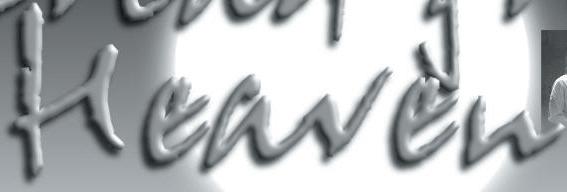









Fruits of Christmas Bishops' Messages
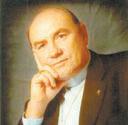
Christmas in the Kimberley is an engaging time filled with its own special character. It is the season of the year when the crowds of touristS have gone, the queues at the Post Office and other places are manageable. In some locations “the wet” has already begun and green is once again a dominant colour. In other areas rain clouds make an occasional appearance in a promising sky only to dissipate, adding their moist vapour of humidity to a north-Australian summer.
Some of the fruits of Christmas –generosity and goodwill – are enjoyed by many. But the essence of the Christ-Mass is the domain only of those who prayerfully meditate on its wonder and rejoice in its grace. It is an unpredictable period and messages on the radio speak constantly of the need to be prepared for the possibility of a cyclone. Who can forget Cyclone Tracey in Darwin and the havoc it wrought in 1974? Many displaced persons made their homes in the Kimberley after that horrible natural disaster.
Like children everywhere Kimberley kids turn their minds to Santa and get excited when they catch a glimpse of the red suit and white whiskers at a shopping centre. Shopkeepers decorate their stores with Yuletide trappings and the cash registers wind up in a chorus of family indebtedness.
Whatever the weather and no matter the silliness of unbridled expenditure, no one can deny the joy that is experienced not only on the faces of children but in the good cheer of familiar greetings and friendly encounters. It is a good thing to meditate on the origins of this happy interlude, perhaps with a hope that the joy of the season might find a more permanent place in the vista of human relations.
That first Christmas was an unpredictable time for the Holy Family. They didn’t have much money to spend and the weather was not conducive to sleeping out. Jesus’ first home was a temporary place more suited to animals and

produce. But there was joy just the same. God reached out to His people in an embrace of loving familiarity and unfettered joy. To the world was born a saviour, “He is Christ the Lord”, the second person of the Blessed Trinity, the Son of God.
On that dim evening shepherds played their pipes while choirs of angels lifted their voices in a chorus of praise. The world was promised a new beginning festooned with hope and peace. The riddles of life became sensible to the peoples of faith.
There is no doubt that it takes faith to appreciate the mystery of Christmas. Some of the fruits of Christmas – generosity and good-

will – are enjoyed by many. But the essence of the Christ-Mass is the domain only of those who prayerfully meditate on its wonder and rejoice in its grace. To celebrate Christmas in the truest sense we need to give thanks to almighty God for his blessings. A family knows true prosperity when it praises God and recognises in Christ the God who loves us.
I pray that the world which knows so much suffering and disappointment may see the sacred life of the new-born saviour shine in the hearts of all those who profess “Jesus is Lord”. And may the peace of Christmas and all God’s choicest blessings be with you and your family always.
Maranatha Institute for Adult Faith Education
Catholic Education Centre, 50 Ruislip Street, Leederville
The Maranatha Institute of Adult Faith Education would like to take this opportunity to wish past and present students a happy and peaceful Christmas season.
We pray God’s blessing upon you all and look forward to seeing you again in 2005.
As well as the usual Maranatha courses we have four new units for you to look forward to next year:
- The Gift of the Eucharist - “Do this in memory of Me” with Fr Vincent Glynn
- Ministry to those who grieve with Gerry Smith
- From Eden to the Promised Land: - Old Testament with Stephanie Woods
- The gospel in the Year of Matthew with Sr Shelley
If you would like to receive a Course Booklet for 2005 please call Maranatha on 9212 9311 and leave a message or email on maranatha@ceo.wa.edu.au
Back to basics at Christmas

Christmas is a time to get back to basics. One of these is the secret to true peace. This is the peace for which every human heart yearns.
The angels sang of true peace with the words ‘peace on earth’. This is the peace Jesus came to bring [Luke 1:79; 2:14]. True peace is the harmony with God that brings two effects. The first is peace within, and second is peace with others.
This too is the peace Jesus had in mind when he said: ‘my peace is not the peace of this world’ [John 14:27]. This is the peace ‘you can find in me’ [John 16:33].
The peace found in Christ is much more than the absence of war, arguments or tensions. It leads to harmony between spouses, within families, among friends and between community members – and, ultimately, between nations. The peace, found in
Christ, grows within each of us to the extent that we draw closer in personal relationship with him. The Eucharist: selfless love and peace
In the Gospel of John, several themes related to growing personal relationship with Christ are threaded together in the account of the Last Supper. We read Jesus speaking of peace, of oneness with God – and of selfless love [John 14:27; 15:10; 15:13].
Only God-like selfless love can bring true peace to the human heart. Yet, totally selfless love is beyond the capacity of human beings on their own.
This is the love required for ‘peace on earth’, the peace that is ‘not the peace of this world’. Only selfless human love reflects God, for God’s love is only selfless and self-giving.
Indeed, God’s selfless love is never self centred. It is always forgiving and merciful [Matthew 5:43-45; 6:14]. It is always patient [2 Peter 3:9]. Jesus taught much about this love. The greatest proof of its selflessness was God the Father giving his only Son to the world [John 3:16].
Only God-like selfless love can bring true peace to the human
Continued on page 11
Natural Fertility Services
Helping Couples Achieve, Avoid and Space Pregnancies Since 1968.
Phone 1800 114 010 for a confidential appointment www.acnfp.com.au <http://www.acnfp.com.au/> perth@acnfp.com.au
Family Life Education. (A Department of Natural Fertility Services) Fertility and Sexuality Programs: Pre-Marriage and Marriage Enrichment Courses
/



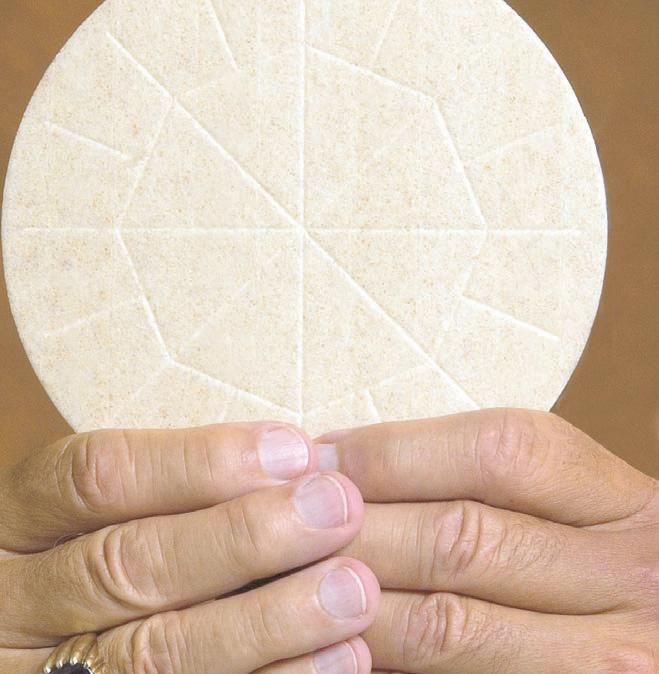

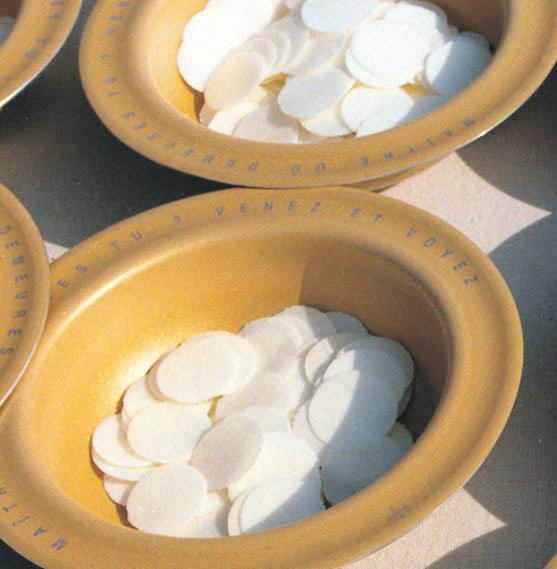

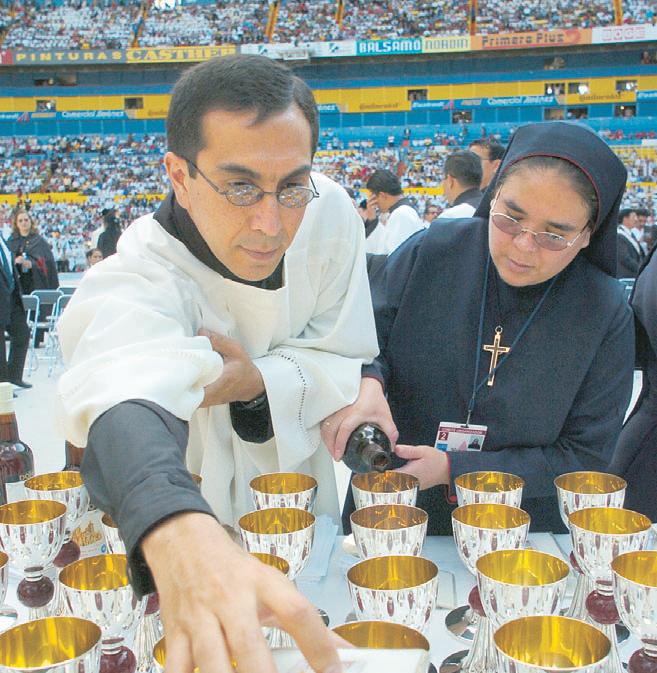

The heart
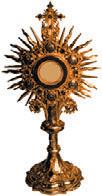
On June 13, the feast of the Most Holy Body, and Blood of Christ or Corpus Christi, Pope John Paul II declared the international Year of the Eucharist, beginning with the International Eucharistic Congress, held in October in Guadalajara, Mexico, and concluding in October 2005 with the Ordinary Assembly of the Synod of Bishops in Rome, which will address the topic of the Eucharist in the life of the Church.
Grow in prayer
So, why did the Pope declare the Year of the Eucharist at this time, and what does he hope it will accomplish? Part of the answer can be found in his Corpus Christi message, which referred back to his apostolic letter Novo Millennio Ineunte (“At the Beginning of the New Millennium”), issued at the close of the Jubilee Year 2000. In that letter he wrote, “I therefore wish to insist that sharing in the Eucharist should really be the heart of Sunday for every baptised person.”
To that end, in his Corpus Christi message, the Holy Father explained that the Year of the Eucharist fits into “the context of the pastoral project that I pointed out in the apostolic letter Novo Millennio Ineunte, in which I invited the faithful to ‘start afresh from
of Sunday
Christ.’ By contemplating with greater perseverance the face of the incarnate Word, truly present in the Sacrament, they will train themselves in the art of prayer and undertake that high standard of Christian living, an indispensable condition for effectively developing the new evangelisation.”
The Year of the Eucharist is meant to be a time of conversion and inner renewal.
There will, of course, be a special focus on the person of Jesus Christ, as He is uniquely and truly present in the Eucharist. It will be time marked by growth in prayer, especially before the Blessed Sacrament, as the Pope indicates in his most recent encyclical, Ecclesia de Eucharistia (“Church of the Eucharist”), where he states in a beautiful passage: “It is pleasant to spend time with Him, to lie close to His breast like the beloved disciple and to feel the infinite love present in His heart. If in our time Christians must be distinguished above all by the art of prayer, how can we not feel a renewed need to spend time in spiritual converse, in silent adoration, in heartfelt love before Christ present in the most holy Sacrament?”
These inward activities of conversion, prayer, worship and devotion are meant to manifest in greater holiness and increased evangelisation.
These two themes appear often in the documents of the Second Vatican Council; both are constants in the writings and teachings of Pope John Paul. His vision follows a clear and consistent logic: By focusing on the Eucharist, “the cen-
tre of the Church’s life,” Catholics become more like Christ. In turn, they embrace the mission of Christ, and they work to evangelise the world.
And, as the Holy Father explains in ‘Eucharist and Mission’, “ there cannot be effective evangelisation unless there are “apostles who are ‘experts’ in the celebration, adoration and contemplation of the Eucharist.”
Banish dark clouds
In Ecclesia de Eucharistia, the Holy Father laments a number of ‘shadows’ that have fallen over the understanding of the Eucharist and the celebration of the eucharistic liturgy.
The Year of the Eucharist is meant to be a time of conversion and inner renewal.
He notes that in many places Eucharistic Adoration has “been almost completely abandoned,” a fact that causes him obvious and deep grief. There are liturgical and catechetical abuses that cause confusion and even doubt. The sacrificial meaning of the Eucharist is often ignored or devalued, and there results an unbalanced emphasis on the Eucharist as “simply a fraternal banquet.”
Today in the US, some 50 percent of Catholics do not regularly attend Mass on Sunday. Although there has been some dispute about the actual numbers and percentages, it is widely acknowledged that a correct belief about the
Eucharist among Catholics, especially the Real Presence, has been in serious decline for many years.
Closely related is a general lack of proper reverence and devotion, reflecting confusion about Church teaching regarding the Eucharist and, in some cases, overt dissent from that teaching.
Seeking to right these wrongs, Ecclesia de Eucharistia begins by emphasizing one of the most famous phrases penned at the Second Vatican Council: the description of the Eucharistic sacrifice as “the source and summit of the Christian life”
Ecclesia de Eucharistia places a purposeful, even forceful, emphasis on the intimate connection between the paschal sacrifice and the mystery of the Eucharist. “The Mass makes present the sacrifice of the Cross; it does not add to that sacrifice, nor does it multiply it,” writes Pope John Paul. “By virtue of its close relationship to the sacrifice of Golgotha, the Eucharist is a sacrifice in a strict sense.”
Woman of the Eucharist
The Holy Father provides another reason for choosing this year as the “Year of the Eucharist,” one rooted in the person of Mary and her unique relationship to the Eucharist. Ecclesia de Eucharistia points out that “this year there will be an eloquent reference to the Blessed Virgin Mary, because of the occurrence of the 150th anniversary of the definition of the dogma of the Immaculate Conception.”
Pope John Paul II urges Catholics to “contemplate the Eucharist with the eyes of Mary.” Why? So that the
A short history of the Eucharist
In The Bible
The Eucharist was instituted by Jesus Christ at the Last Supper - the same time the apostles were made priests.
The sacrament was instituted as a memorial of Jesus’ approaching death and resurrection.
The synoptic GospelsMatthew, Mark and Luke give an account of that institution, as does Paul in 1 Cor 11. John’s Gospel (Ch 6) recounts the “bread of life” discourse and Jesus’ insistence that His disciples eat His flesh and drink His blood, a reference to the Eucharist that was clearly understood by the apostle’s first century readers.
from prayer because they do not confess that the Eucharist is the flesh of our saviour, Jesus Christ, flesh which suffered for our sins and which the Father, in His goodness, raised up again. They who deny the gift of God are perishing in their disputes.
Church will offer the “ Bread of salvation to all peoples that they may recognise Him and accept Him as the only Saviour of mankind.”
The Eucharist is the “source and summit” of the faith. Mary, who is the Mother of God and the sinless first disciple of her Son, is also a source, because she gave birth to Christ, and a summit, because she is full of grace, the life of God. If “the Church and the Eucharist are inseparably united;” the Pope writes, “the same ought to be said of Mary and the Eucharist” (Ecclesia de Eucharistia).
As his pontificate draws towards its end, Pope John Paul continues to lead and inspire, his eyes firmly set upon the Eucharist and his heart filled with love for his Saviour and the Church. Concluding Ecclesia de Eucharistia, he beautifully articulates the truth about the Eucharist and asks a question that should resonate with every Catholic during the Year of the Eucharist:
“Every commitment to holiness, every activity aimed at carrying out the Church’s mission, every work of pastoral planning, must draw the strength it needs from the eucharistic mystery and in turn be directed to that mystery as its culmination.
“In the Eucharist, we have Jesus, we have His redemptive sacrifice, we have His resurrection, we have the gift of the Holy Spirit, we have adoration, obedience and love of the Father. Were we to disregard the Eucharist, how could we overcome our own deficiency?”
In Acts 2, the followers of the Christ are described as meeting on Sunday, the first day of the week, in the temple and in homes, devoting themselves to “the apostles’ teaching and fellowship, to the breaking of bread and the prayers.”
This basic pattern of the Mass - meeting together, reading Scripture and receiving the Eucharist remains to this day.
In the early Church Fathers
Ignatius, the bishop of Antioch, wrote about the Eucharist early in the second century, describing Gnostic heretics, the Docetists, who refused to believe in the Eucharist because of their dislike for the material world: “They abstain from the Eucharist and
The apologist and convert Justin Martyr, writing in the middle of the second century, described the eucharistic liturgy: gather together, read Scripture, hear a homily, pray; then, “bread and wine and water are brought, and the president in like manner offers prayers and thanksgivings, according to his ability, and the people assent, saying amen; and there is a distribution to each, and a participation of that over which thanks have been given, and to those who are absent a portion is sent by the deacons.”
Justin also explains that the Eucharist is not “common bread and common drink.” He and the other Christians had “been taught that the food which is blessed by the prayer of His word, and from which our blood and flesh by transmutation are nourished, is the flesh and blood of that Jesus who was made flesh.” Likewise, Irenaeus, bishop of Lyons, wrote that the Eucharist consists of “two things, the earthly and the heavenly, so our bodies, receiving the Eucharist, are no longer corruptible but have the hope
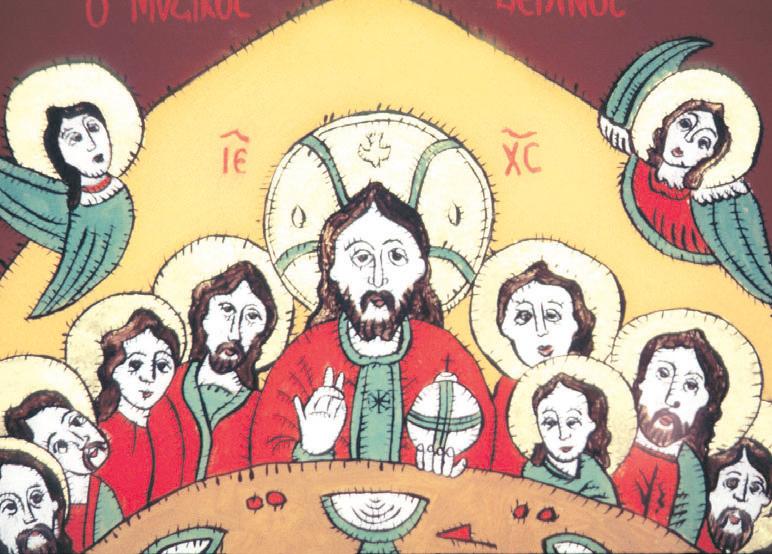
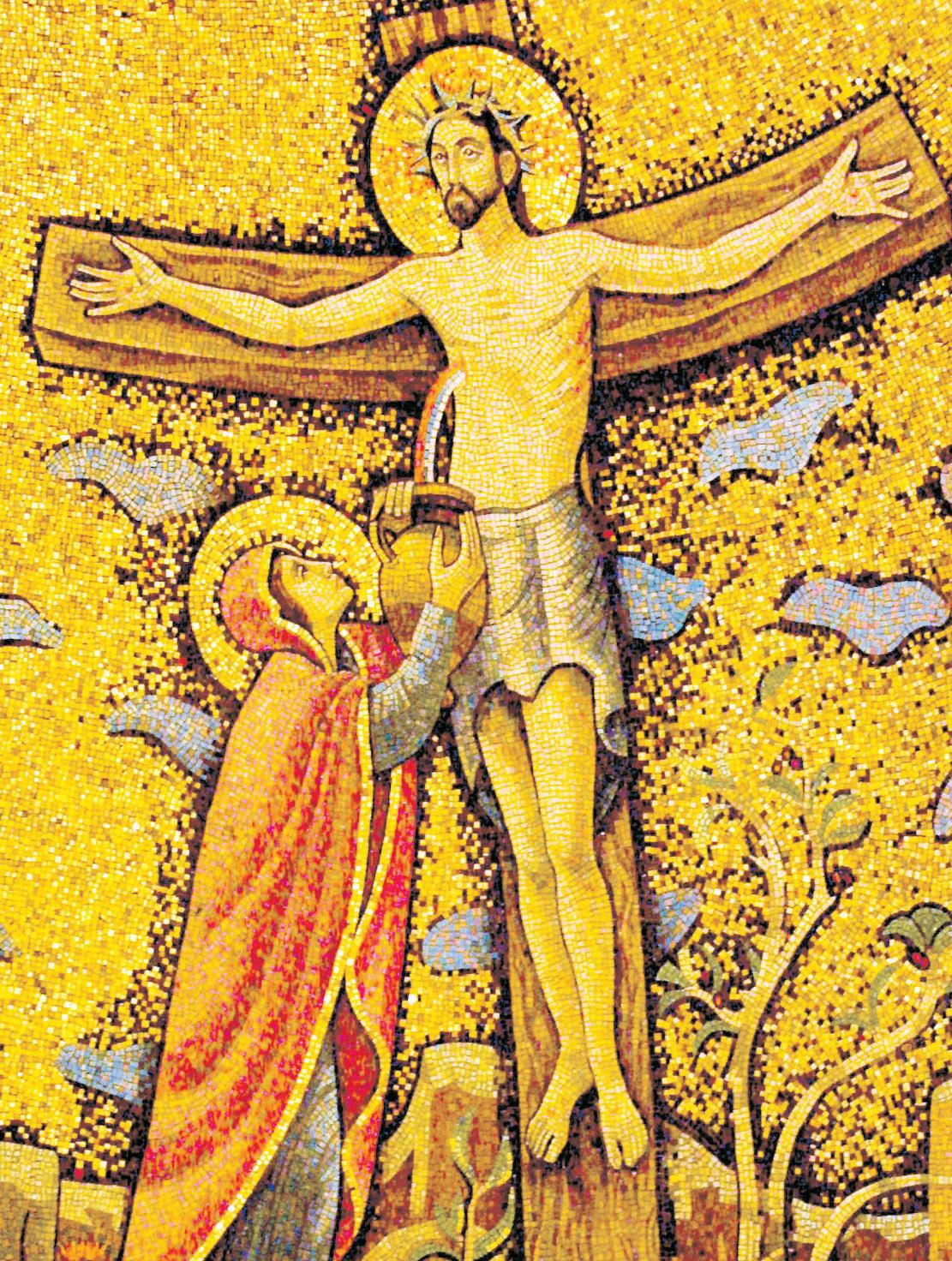
Gospel
John
tells of the blood and water flowing from Christ’s side. Biblical scholars see the blood and water as symbolic references to the Eucharist and baptism. Pope John Paul II’s 14th encyclical, “Ecclesia de Eucharistia,” focuses on the central sacrament of the faith.
CNS
of resurrection to eternal life.”
These beliefs and ideas were further developed by other Church Fathers. For several centuries there was little, if any, dissent from them.
In Church councils
That changed at the start of the second millennium when Berengarius of Tours apparently asserted in a series of letters that the bread and wine remain after being consecrated and that Christ’s presence is offered spiritually only. By the time of the Fourth Lateran Council in 1215 there were a number of questionable views being expounded.
Lateran IV defined the doctrine of transubstantiation, reiterated at the Council of Trent three centuries later: “Because Christ our redeemer said that it was truly His body that He was offering under the species of bread, it has always been the conviction of the Church of God, and this holy council now declares again, that by the con-
secration of the bread and wine there takes place a change of the whole substance of the bread into the substance of the body of Christ our Lord and of the whole substance of the wine into the substance of His blood. This change the holy Catholic Church has fittingly and properly called transubstantiation.”
This pattern of the Mass - meeting together, reading Scripture and receiving the Eucharist - remains to this day.
Although the Second Vatican Council did not produce a specific document on the Eucharist, Lumen Gentium (Dogmatic Constitution on the Church) and Sacrosanctum Concilium (Constitution on the Sacred Liturgy) made substantial remarks about it.
In papal encyclicals
In the 20th century, there were three encyclicals with significant space devoted to the Eucharist: Pope Leo XIII’s Mirae Caritatis (on the Holy Eucharist), Pope Pius XII’s Mediator Dei (on the sacred liturgy) and Pope Paul VI’s Mysterium Fidei (Mystery of Faith). Pope John Paul II’s Ecclesia de Eucharistia, (Church of the Eucharist) carried the Catholic tradition of spiritual reflection, theological consideration, and pastoral exhortation oriented around and toward the Eucharist into the 21st century. The canons and definitions of the Council of Trent are, according to Pope John Paul ll, “still a dogmatic reference point for the continual renewal and growth of God’s people in faith and in love for the Eucharist” (Ecclesia de Eucharistia). - OSV ■ Next week: Why Catholics believe in the Eucharist and how to defend that belief.
These important documents reiterated traditional teaching and reflected more deeply on the place of the Eucharist in the life of the Church.
Back to basics
Continued from page 6 heart. Yet, totally selfless love is beyond the capacity of human beings on their own.
This is one reason why, during the Last Supper, Jesus gave us the Eucharist. Two of its fruits are growing closeness with Christ, and the spiritual nourishment of self-giving love, both of which are needed for true peace [Catechism 1391, 1394]. Growing closeness with Christ, and Christ-like love, grow stronger subtly, just as nourishing food subtly strengthens the body.
The Eucharist, then, is essential for the peace Jesus promised we could find in him [John 16:33]. Without this, our capacity to contribute to peace on earth would be much more limited.
In the Eucharist, Christ is present, offering himself to the Father for us all in pure, self-giving love. At the Last Supper, he said: ‘This is my body, given for you’, ‘This cup is the new covenant in my blood, poured out for you’ [Luke 22:19-20]. Our thoughts can never move far from the Last Supper in this Year of the Eucharist.
Self-centredness undermines peace
Catholics no longer going to Mass often say: ‘I get nothing out of it’ ‘It does nothing for me’. Many pray little, or only when they want something. Yet, no relationship – either with Jesus or with anyone else – can grow without selfless love. And true peace can be found only in him [John 16:33].
One of the basic causes of the decline in religious practice in Australia today is the self-centred culture of our society. People ask: ‘What’s in it for me?’ ‘Why should I put myself out?’ ‘What will I get out of it?’
To join in the Eucharist only if ‘I
We can help:
get something out of it’ is the very opposite attitude to that of Jesus. We grow in communion with him to the extent that, like him, our selfoffering expresses selfless love to God the Father.
Catholics no longer going to Mass often say:
‘I get nothing out of it’ ‘It does nothing for me’.
Many pray little, or only when they want something. Yet, no relationship – either with Jesus or with anyone else – can grow without selfless love. And true peace can be found only in him [John 16:33]
Selfless prayer
The same is true of daily prayer. This is a pre-requisite for the heartfelt Eucharistic worship needed for true peace. As the summit of Christian prayer, the Eucharist must be built upon daily prayer. This too, at least sometimes, must be self-giving.
While daily prayer can bring many rewards, we need times when we seem ‘to get nothing out of it’. Selflessness is required for any human relationship to deepen to the level of heart-felt communion, and selfless prayer is important for the level of communion with God needed to become instruments of God’s peace.
St Therese of Lisieux, for example, prayed in her last years ‘as
- married couples experiencing fertility difficulties or miscarriages
- women with menstrual or other women’s health problems
- couples wanting to learn about their fertility and plan their families naturally
For a confidential discussion contact Dr Amanda Lamont 9388 1334 8/10 McCourt Street, West Leederville
The Australian Centre for FertilityCare and NaProTECHNOLOGY www.fertilitycare.com.au
though I had faith’. Her prayer seemed absolutely dry and unrewarding. Her prayer attitude was completely self-giving – the very opposite of the attitude of people who pray ‘when I feel like it’, ‘when I get something out of it’ or ‘when I want something’.
Where personal prayer declines, self offering through the Eucharist also declines. So too will the peace found in Jesus, and our capacity to be instruments of ‘peace on earth’.
Let us renew ourselves
Let us renew our commitment this Christmas to advancing true peace on earth. No-one can argue that this peace is needed today in so many marriages and families. It is needed across our society and the whole world.
First, let us use every opportunity to encourage others to renew their relationship with God. Peace on earth needs to start in the heart of every human person.
People not growing in harmony with Jesus as their lives progress cannot really contribute to true ‘peace on earth’. Let us encourage in particular our family members and friends to renew their harmony with God this Christmas.
Second, let us renew our faith in the Eucharist as self-giving worship. Let us help others also to appreciate that self-giving love to God in the Eucharist, and in daily prayer, is needed for communion with God. This is the only communion that brings us the peace we need to become instruments of ‘peace on earth’.
Finally, let us encourage others to remember the words of Jesus [John 16:33]:
“I have told you all this so that you may find peace in me.”
May the peace of Christ grow in all our hearts this Christmas – and, through us, lead to greater peace on earth.

Desire is no justification
The legitimate desire for children or the hope for a cure for a disease can never excuse the immoral destruction of human life in the destruction of human embryos, Pope John Paul II said. Human life is to be "accepted with love and in love" from the moment of its conception, the Pope told members of the Italian Forum of Family Associations during a December 18 audience at the Vatican. Artificial fertilisation techniques that include the destruction of some fertilised embryos and the use of embryos to harvest stem cells in the hope of curing disease are examples of "desires taking the place of an authentic right," the right to life, the Pope said. "The legitimate desire for a child or for health cannot be transformed into an unconditional right to the point of justifying the suppression of other human rights," the Pope said.
Tree a symbol of Christ
The traditional evergreen Christmas tree teaches us that life can remain "ever green" if we offer others the gift of ourselves, said Pope John Paul II. The tree symbolises "life that does not die," the Pope said on December 19 before praying the Angelus from the window of his apartment overlooking St Peter's Square. "The meaning of the Christmas tree is that life is ever green if one gives, not so much material things, but of oneself: in friendship and sincere affection, in brotherly assistance and forgiveness, in spending time with others and listening to one another," he said. Some 20,000 faithful were gathered in the square, which was adorned with a decorated 35 metre Christmas tree and a Nativity scene still under construction.
Arsonists bomb church
Arsonists attacked a Catholic church in Sri Lanka for the third time since November 2003 in what church authorities believe to be a bias incident. Most of the church's interior was destroyed in the December 19 attack; attackers also set fire to the altar, tabernacle and church organ, said Father Ignatius Varnakulasingham, pastor of St. Michael's Church in Homagama, reported UCA News, an Asian church news agency based in Thailand. Father Varnakulasingham said damage to the mission church was about US $10,000. He said he cannot rule out the possibility that a political group was involved in the incident. "Some Buddhist clergy do not want the church to be active in Homagama," he said. "They do not want other religions to worship because this is a predominantly Buddhist area," he said. The local church serves about 130 Catholic families.

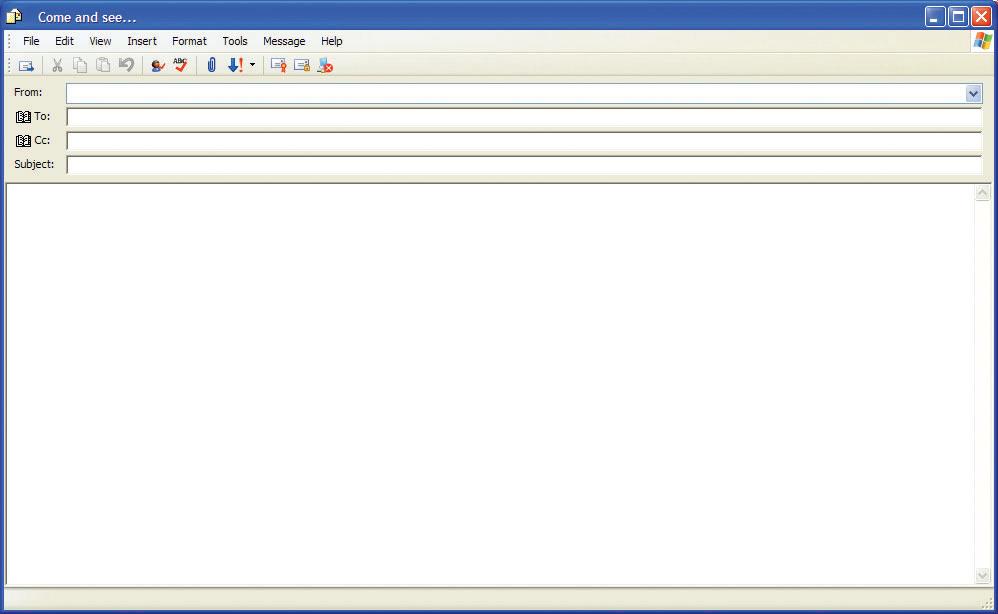
What people think Christmas means
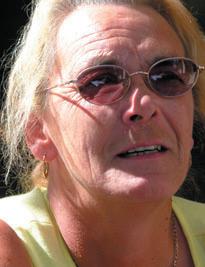
The couple are here in Australia from the United Kingdom and said shopping centres are simply using Christmas as a time of profit. “Very soon they’ll have Easter eggs on the shelves,” said Mr Clark.
“The strategy is just to please people, especially the children.”
"Children in today’s society have smartened up to the fact that they can get what they want because parents are being bombarded with messages to give children too many material possessions.
“It is a money making racket.” 18-year-old John Roberts said that in the past he has gone to Catholic Church services. He believed that some people might be going to Mass, particularly at Christmas because of the association of Santa and St Nicholas, but not for the birth of Jesus Christ.
“Christmas has become a time of greed,” he said.
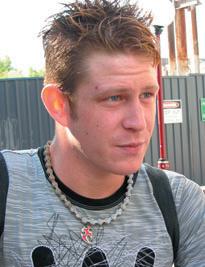
“It has become too commercialised, and is just about getting presents.”
One of the two Catholics questioned was 23-yearold Emmanuela Niederberger, from Switzerland.
Miss Niederberger said she is not practising her faith at the moment, and that she does not believe there is a need to go to Mass at Christmas.
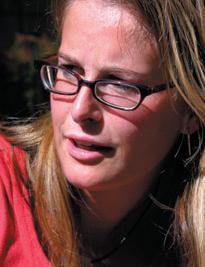
She went on to say that although she would normally go to Mass with her family at Christmas, this year she would not because of the cultural differences of Australian and Swiss Christmas practices.
“I think I can practise my religion at home,” Miss Niederberger said.
“I’ll be spending time with friends this year instead of family

What does a funeral cost?
Costs come from five main areas:
1. Funeral directors costs, covering professional fees, transportation, facilities and equipment
2. Coffin or casket – we offer a large and varied selection, from simple veneered particle board to solid or carved timber, so that we can meet the needs of all families
3. Cremation or burial site fees
4. Other costs such as flowers, clergy fees, press notices, registration of death fees
5. Cost of headstone, monument or plaque.
Many funerals these days cost around $5,000-7,000. At Purslowe Funeral Homes every funeral is tailored to the preferences and needs of the family and so costs can vary. We provide an up front estimate of costs so that you know what charges are being incurred. In this way, you remain in control and the final cost depends on the choices you make.
Good information about costs is an important part of funeral planning. For more information visit our website or call Rob or Dianne Tinetti. You’ll find us easy to talk to.

and don’t think I’ll have time anyway.”
Former Jehovah’s Witness David Maber, 20, believes that going to Mass is up to the individual person. “Some do, some don’t,” he said.
Mr Maber said this is because people think it is the right thing to do.
“However a majority of people want to spend time with family so they probably forget.”
COMMENT
■ By Jamie O’BrienAfter speaking to more than 10 people in Forrest Chase last week about Christmas and the Mass, including one lady who attacked me simply for being from the Catholic Church, I am convinced there is a great need for an increase in teaching.
Teaching on why Christmas is about the birth of Christ and also
the Mass. Christmas is already about the birth of Christ - that is not the dispute.
Teaching is needed on why Christmas is about the birth of Christ and how this miraculous event is related to the Mass and our life.
Advertising has clearly and successfully provided a much more tempting and ludicrous message that the season is simply about material possessions.
Comments about the greediness of some children should not be seen as scandalous.
After all, has anyone told them anything different, or that Christ loves them with or without the material possessions?
From my questioning of the general public (I didn't aim to speak only to Catholics) the general consensus was that people today do not want to be confronted with what they know to be the truth – that Christ and the Mass are at the centre of the true meaning of Christmas.
His birth is an opportunity for each one of us - no matter how sinful - to be reborn by asking for his love and mercy through the sacraments.
During my encounter, one man,

who did not want to be named or questioned, even went as far as to say he was scared of religion.
Furthermore I wasn't suprised when one of the two Catholics, questioned did not even see a need to go to Mass at Christmas.
A number of people questioned said they had no ideas of what the concept of Christmas is, or should be.
The fact that the media have given Christmas a new meaning seems to have affected people quite significantly.
It was interesting to hear that people are searching for something more than the material side of Christmas.
I believe it has come to the time when it is possible to say that even seasonal Catholics are no longer interested in attending Mass at festive occasions - primarily Christmas and Easter.
The festive seasons are a guaranteed moment when lapsed Catholics have the opportunity of hearing that Christ loves them, therefore providing a further opportunity to turn their life around and perhaps make a better committment to hearing the word of God more often.

40% - 50 % off all Nativity Sets,Stable & Cards 20% off Christmas Books
25% off RosariesCr ucifixes, Plaques and other pious gifts in Store 15% off churchware,books,candles, incense and charcoal
Sale Be gins Wednesday 29th December until Saturday 8th January 2005
We are open nor mal trading hours betweenChristmas and New Year and will be c losed on Saturday 1st January & Monday 4 January
We Would like to take this oppor tunity to thank our friends who have supportedus throughout the year and wish them a Happy Christmas and a Safe NewYear.
